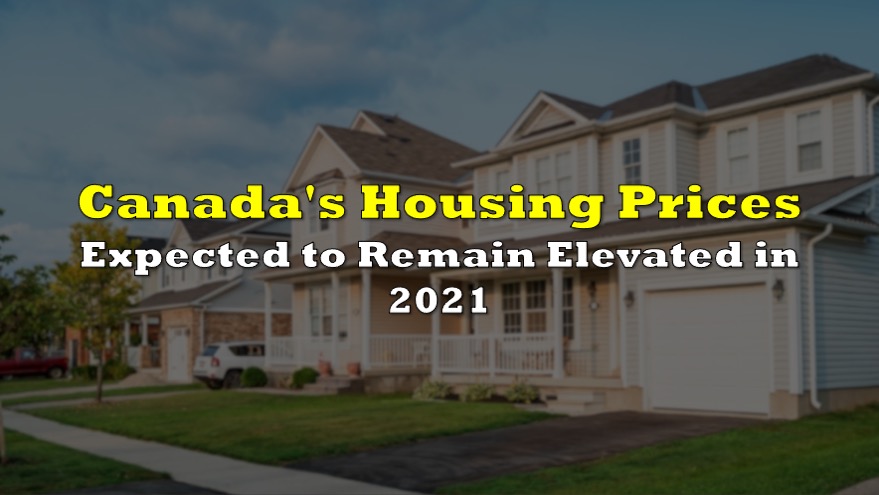According to Statistics Canada, the growth in new home prices has been on a slight decline over the past three months, rising by 0.3% from November. Despite the slowdown however, prices still remain 4.6% higher compared to December 2019, as real estate activity across Canada registered a strong finish to 2020.
The recent analysis by Statistics Canada found that prices of new homes increased across 17 of the 27 census metropolitan areas (CMAs) in December, with prices in Oshawa increasing by 3.1%— the fastest pace by far. At the same time, employment levels in Oshawa rose by 3.2% on a year-over-year basis, and are expected to increase by another 2,300 jobs following GM’s assembly plant reopening. The city of Oshawa has also become a more affordable living option for potential homebuyers compared to nearby Toronto. In the meantime, the city also registered the fastest population growth between July 2019 and July 2020 compared to all other CMAs.

On a national level, Statistics Canada found that new housing prices rose by 2.1% compared to 2019, with prices increasing by 0.7% between January and March 2020. However, once the pandemic hit Canada and governments imposed strict public health measures, the growth of new home prices became stagnant at 0.0% in April, and then increasing slightly in May and June by 0.1%. However, by the second half of 2020, new home prices were registering strong gains despite the pandemic, rising by 3.7% between June and December.
So, why did new housing prices register such strong growth in 2020— especially in CMAs like Oshawa, despite the ongoing economic struggles across all other sectors of Canada’s economy? According to Statistics Canada, new housing prices tend to fall during times of elevated unemployment and economic uncertainty; in fact, during the Financial Crisis, new housing prices dropped by 2.3% in 2009. However, during the Covid-19 pandemic — which caused the biggest economic contraction since the Second World War, new housing prices increased by 2.1% in 2020 compared to 2019.
The reason behind the anomaly is largely due to the global changes that the pandemic brought on, and the resulting shifts in behaviour. At the consumer level, the demand for more spacious housing increased as more Canadians adjusted to the new reality of working from home. Prices for single-family homes increased by the most compared to all other categories, as Canadians that were able to work remotely sought accommodations that offered cheaper and more spacious living— such as Oshawa, in leu of crowded metro areas like Toronto.
At the same, the pandemic brought on strong macroeconomic conditions. The Bank of Canada lowered its overnight rate from 1.75% at the beginning of 2020, to 0.25% in March in order to lessen the financial implications of Covid-19. The central bank has maintained the historically-low rate since then, all while the federal government unleashed a furry of fiscal policies that increased Canadians’ disposable income levels. The combination of these conditions ultimately created the environment for housing demand growth and the resulting spike in prices.
The pandemic also forced many Canadians to spend more time at home, resulting in an increase of renovation activities. That, combined with the strong demand for new housing, caused lumber prices to rise, resulting in even higher home prices. In addition, the public health restrictions that were introduced during the spring lead to reduced operations at sawmills, which also contributed to the increase in lumber prices across Canada. Statistics Canada estimates that the higher lumber prices added at least $8,000 to $10,000 to the cost of constructing a single-family house.
Going forward, Statistics Canada anticipates that the current trajectory of housing prices will continue in 2021. The new reality of working from home will likely become a more permanent routine for many Canadians even after the pandemic, leading to a continued demand for living spaces that can accommodate family needs. Such circumstances will strengthen prices for single-family homes, especially in regions that offer relatively more affordable suburban markets. Housing prices are expected to increase even more in markets where demand is already high, and inventory of available homes remains at record-low levels.
Information for this briefing was found via Statistics Canada. The author has no securities or affiliations related to this organization. Not a recommendation to buy or sell. Always do additional research and consult a professional before purchasing a security. The author holds no licenses.









